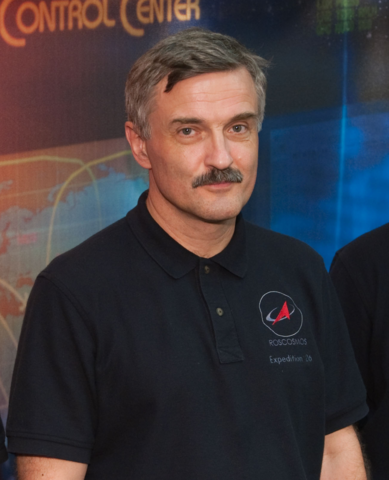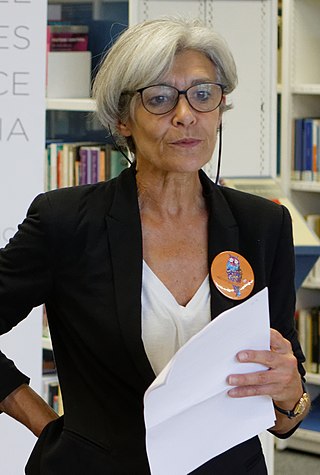
Space History for May 13
If you are not already a subscriber, you are welcome to enter your email address here to sign up to receive the Space History newsletter on a daily basis. Under no circumstances will we release your legitimate email address entered here to outside persons or organizations, and it will only be used for mailing the specific information you have requested.
| Enter your email address here: |
Unsubscribe instructions are included in every newsletter issue in case you decide you no longer wish to receive it.
Note: We record the IP address from which subscriptions are entered to help prevent SPAM abuses.
Race To Space
Someone will win the prize...
... but at what cost?
Visit RaceToSpaceProject.com
to find out more!
1713
Born, Alexis Claude Clairault, French mathematician ("Clairault's theorem" connects the gravity at points on the surface of a rotating ellipsoid with the compression and the centrifugal force at the equator)
ref: en.wikipedia.org
1878
Died, Joseph Henry, US scientist, inventor, and pioneer of electromagnetism
ref: en.wikipedia.org
1884
The American Institute of Electrical Engineers, one of the predecessors of the Institute for Electrical and Electronics Engineers (IEEE), was founded.
ref: ethw.org
1897
Guglielmo Marconi sent the first communication by wireless telegraph across open water, over the Bristol Channel from Flat Holm Island to Lavernock Point in Penarth, a distance of 6 km (3.7 mi).
ref: en.wikipedia.org
1909
A. Kopff discovered asteroid #681 Gorgo.
1913
Igor Sikorsky became the first man to pilot a four-engine aircraft.
ref: en.wikipedia.org
1918
The first US airmail stamps, illustrated with a Curtiss JN-4 airplane, were issued with a price of 24 cents each. They were the world's first airmail stamps specifically issued for the purpose.

First US airmail stamp, depicting a Curtis Jenny, issued 13 May 1918
Source: Wikipedia
ref: en.wikipedia.org
1923
Born, Donald Milton Sorlie (at Omaha, Nebraska, USA), American test pilot, flew the M2F1 & M2F2 lifting body predecessors of the Shuttle (deceased)
ref: www.spacefacts.de
1931
C. Jackson discovered asteroid #1194 Aletta.
1934
C. Jackson discovered asteroid #1320 Impala.
1942
Born, Vladimir A. Dzhanibekov (at Iskander, Tashkent Oblast, Uzbek SSR), Major General Soviet AF, Soviet cosmonaut (Soyuz 27/26 swap at Salyut 6, Soyuz 39, Soyuz T-6, Soyuz T-12, Salyut 7; nearly 145d 16h total time in spaceflight)

USSR 1979 Soyuz-27 stamp portraying cosmonauts Vladimir Dzhanibekov (left) and Oleg Makarov
Source: Wikipedia
ref: www.spacefacts.de
1947
By Soviet decree, Kapustin Yar was established as a rocket proving ground to test captured German V2 rockets.
ref: en.wikipedia.org
1948 13:43:00 GMT
The first Bumper-WAC Corporal launch reached an altitude of 127.3 km (79.1 mi).
ref: en.wikipedia.org
1956
Born, Aleksandr Yuriyevich Kaleri (at Yurmala, Latvian SSR), USSR/Russian engineer, cosmonaut (Mir 11, Mir 22, Mir 28, ISS 8, ISS 25/26; over 769d 6.5h total time in spaceflight)

Russian cosmonaut Alexander Kaleri, Expedition 25/26 flight engineer
NASA photo (11 October 2010)
Source: Wikipedia (spaceflight.nasa.gov killed 25 Feb 2021)
ref: www.spacefacts.de
1957
Born, Claudie Haignere (nee Andre-Deshays, at Le Creusot, France), French engineer, ESA astronaut (Mir Cassiopee mission/1996, ISS Andromede mission/2001)

French Astronaut Claudie Haignere, photo by P. Beaudouin
Source: Wikipedia (spaceflight.nasa.gov dead 25 Feb 2021)
ref: www.esa.int
1960 09:16:00 GMT
In the first launch of a Delta rocket, Echo-X was unable to achieve orbit due to a second stage failure.
The Echo A-10 spacecraft, launched 13 May 1960, was a 100-foot passive reflector sphere that was intended to be used in a series of communications experiments. During the Delta booster's coast period, the attitude control jets on the second stage failed and the spacecraft did not achieve orbit.
ref: nssdc.gsfc.nasa.gov
1961
A Soviet decree entitled "On Reconsideration of the Plans for Space Vehicles in the Direction of the Defense Purposes" set 1965 as the target date for the first test launch of the N1 rocket planned for manned Lunar missions.
ref: www.russianspaceweb.com
1964 12:59:00 GMT
NASA launched Little Joe II A-001 using a command module (CM) boilerplate (BP-12) at White Sands Missile Range, New Mexico, for determination of the aerodynamic characteristics of the launch escape system. The 5 min 50 sec flight to 5 km was successful.

Little Joe II launch, White Sands, NM, NASA photo
Source: Wikipedia
ref: www.hq.nasa.gov
1969
P. Wild discovered asteroid #1775 Zimmerwald.
1982 09:58:00 GMT
USSR launched Soyuz T-5 which carried Anatoli Berezovoi and Valentin Lebedev to Salyut 7 to conduct scientific research and experiments during their 211 days in space; the capsule returned the crew of Soyuz T-7 to Earth.
ref: nssdc.gsfc.nasa.gov
1988
Air Force Secretary Edward C. Aldridge, Jr., directed the Air Force to begin mothballing the Space Shuttle program at Vandenberg Air Force Base.
ref: en.wikipedia.org
1989
The first flight of the An-225 (Mriya) transport aircraft with the Buran spaceplane mounted on the top of its fuselage was made, nearly 6 months after Buran's sole flight into space on 15 Novemer 1988.
ref: www.russianspaceweb.com
1992
Three astronauts simultaneously walked in space for the first time as the crew of STS 49 (Endeavor 1, 47th Shuttle mission) captured INTELSAT VI to attach a booster required to put the satellite into a useful orbit.
STS 49 was the first flight of the shuttle Endeavour, which was built to replace the Challenger. Following the Flight Readiness Firing of Endeavour's three main engines 6 April 1992, Shuttle managers decided to replace all three due to irregularities detected in two of the high pressure oxidizer turbopumps, which had no impact on the launch date. The launch was originally set for 4 May at 8:34 p.m. EDT, but was moved to 7 May to utilize the earlier launch window opening at 7:06 p.m. EDT so there would be better lighting conditions for photographic documentation of vehicle behavior during the launch phase. Liftoff was delayed 34 minutes due to transoceanic abort landing site weather conditions, and a technical glitch with one of the orbiter master events controllers, but otherwise proceeded smoothly.
STS 49 was the first US orbital flight to feature four extravehicular activities (EVAs), two of which were the longest in US space flight history to date (eight hours, 29 minutes and seven hours, 45 minutes), and the longest to date by a female astronaut; it was the first space flight ever to involve three crew members simultaneously working outside the spacecraft; and the first time astronauts attached a live rocket motor to an orbiting satellite. The flight was also extended two days to complete the mission objectives.
The crew successfully captured and redeployed the INTELSAT VI (F-3) satellite which had been stranded in an unusable orbit since its launch aboard a Titan rocket in March 1990. The capture ultimately required three EVAs to complete. The first space walk was on flight day four by Thuot, who was unable to attach the capture bar to INTELSAT from his position on remote manipulator system arm. The second unscheduled but identical attempt by Thuot failed the following day. After a rest on flight day six, an unprecedented three-person EVA was performed on flight day seven (13 May 1992). During the longest EVA in US space history to date (eight hours, 29 minutes), Hieb, Thuot and Akers grasped the rotating INTELSAT by hand while Brandenstein maneuvered the orbiter. After the capture bar was attached to the satellite, the orbiter's remote manipulator system arm grappled the bar and placed the satellite atop the perigee kick motor (PKM) in the cargo bay. The satellite was deployed early on flight day eight, and INTELSAT controllers signaled the PKM to fire, finally sending INTELSAT VI into its operating orbit of 45,000 nautical miles (83,340 kilometers).
On flight day eight, Akers and Thornton performed an EVA as part of the Assembly of Station by EVA Methods (ASEM) experiment to demonstrate and verify maintenance and assembly capabilities for Space Station Freedom. (The station had not been renamed to "International Space Station" at the time of this flight.) The ASEM space walk, originally planned for two successive days, was cut to one day due to the lengthy INTELSAT retrieval operation.
Additional payloads which flew on STS 49 were: the Commercial Protein Crystal Growth (CPCG) experiment; and two payloads of opportunity, the Ultraviolet Plume Instrument (UVPI) experiment and the Air Force Maui Optical Site (AMOS) experiment.
STS 49 ended on 16 May 1992 when Endeavor landed on revolution 141 on Runway 22, Edwards Air Force Base, California. This flight marked the first use of the drag chute during landing; it was deployed after the nosegear touched down for data collection only. Rollout distance: 9,490 feet (2,893 meters). Rollout time: 58 seconds. Launch weight: 256,597 pounds. Landing weight: 201,649 pounds. Orbit altitude: 195 nautical miles. Orbit inclination: 28.35 degrees. Mission duration: eight days, 21 hours, 17 minutes, and 38 seconds. Miles traveled: 3.7 million. The orbiter was returned to Kennedy Space Center on 30 May 1992.
The flight crew for STS 49 was: Daniel C. Brandenstein, Commander; Kevin P. Chilton, Pilot; Pierre J. Thuot, Mission Specialist 1; Kathryn C. Thornton, Mission Specialist 2; Richard J. Hieb, Mission Specialist 3; Thomas D. Akers, Mission Specialist 4; Bruce E. Melnick, Mission Specialist 5.
ref: www.nasa.gov
1998 15:52:00 GMT
NASA launched the NOAA 15 weather satellite into orbit.
NOAA K (NOAA 15), launched 13 May 1998, carried a new microwave sensor in addition to the standard optical/near-infrared radiometers and imagers and the SARSAT search and rescue package. It was the first NOAA launch to use the Titan 23G launch vehicle, a refurbished ICBM. Titan 23G-12 placed NOAA K into a suborbital trajectory 6 minutes after launch. A Star 37XFP solid motor on the satellite fired at apogee to put NOAA K in orbit.
ref: nssdc.gsfc.nasa.gov
2001
Died, Sergei Aleksandrovich Afanasyev, Russian First Minister of General Machine Building, in charge of Soviet ballistic rocket and space industries (1965-1983)
ref: en.wikipedia.org
2003 22:10:00 GMT
The joint Greek/Cypress Hellas-Sat communications satellite was launched from Cape Canaveral, Florida.
ref: nssdc.gsfc.nasa.gov
We are going to run out of oil!
Visit SpacePowerNow.org
to help fix the problem.
SpacePowerNow.org - For Human Survival
Please help support our efforts by shopping from our sponsors.
This newsletter and its contents are Copyright © 2006-2025 by The L5 Development Group. All rights reserved. - Publication, in part or in whole, requires previous written permission. - Academic or personal-use citations must refer to http://L5DGbeta.com as their source. Thank you for your cooperation.



